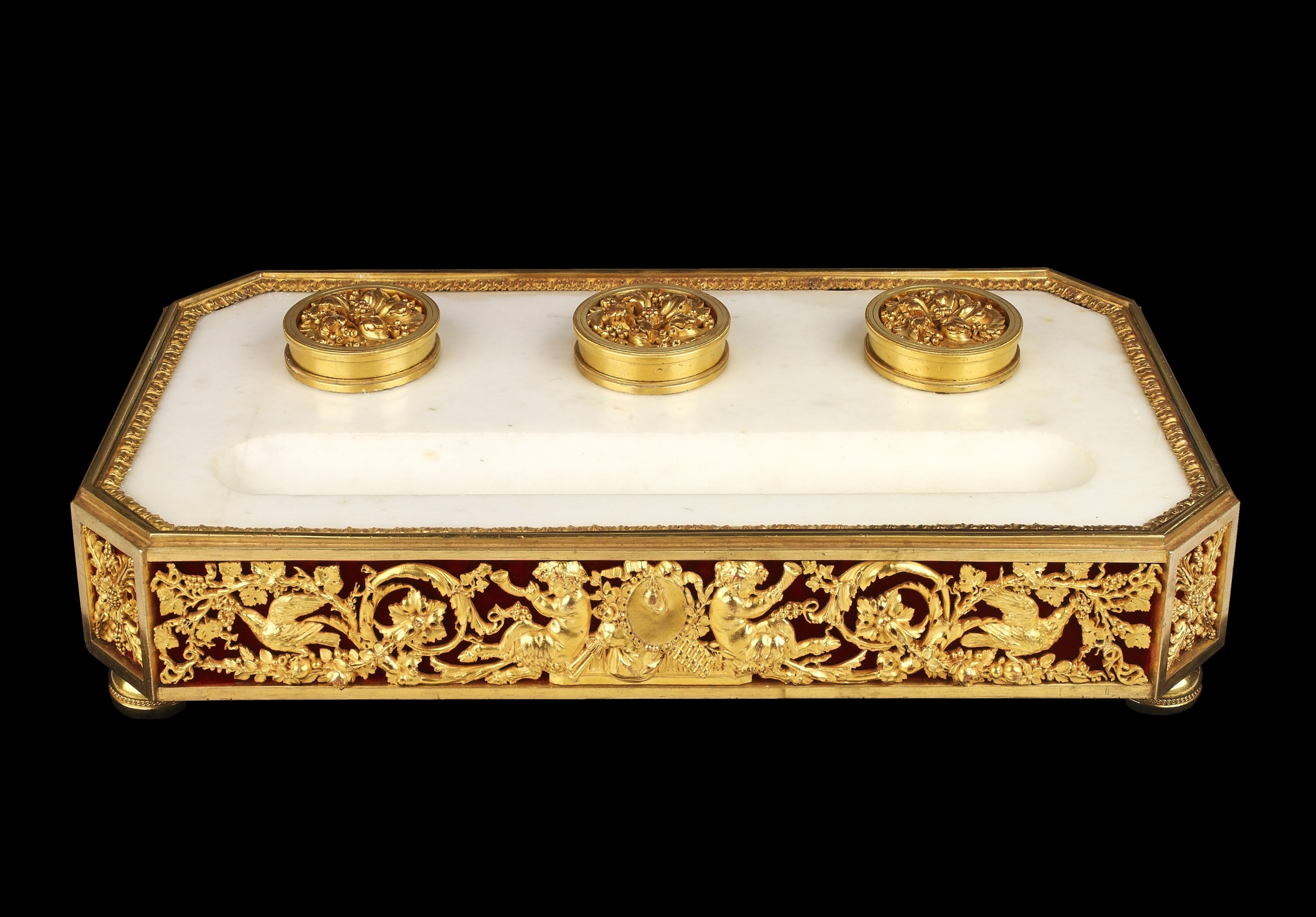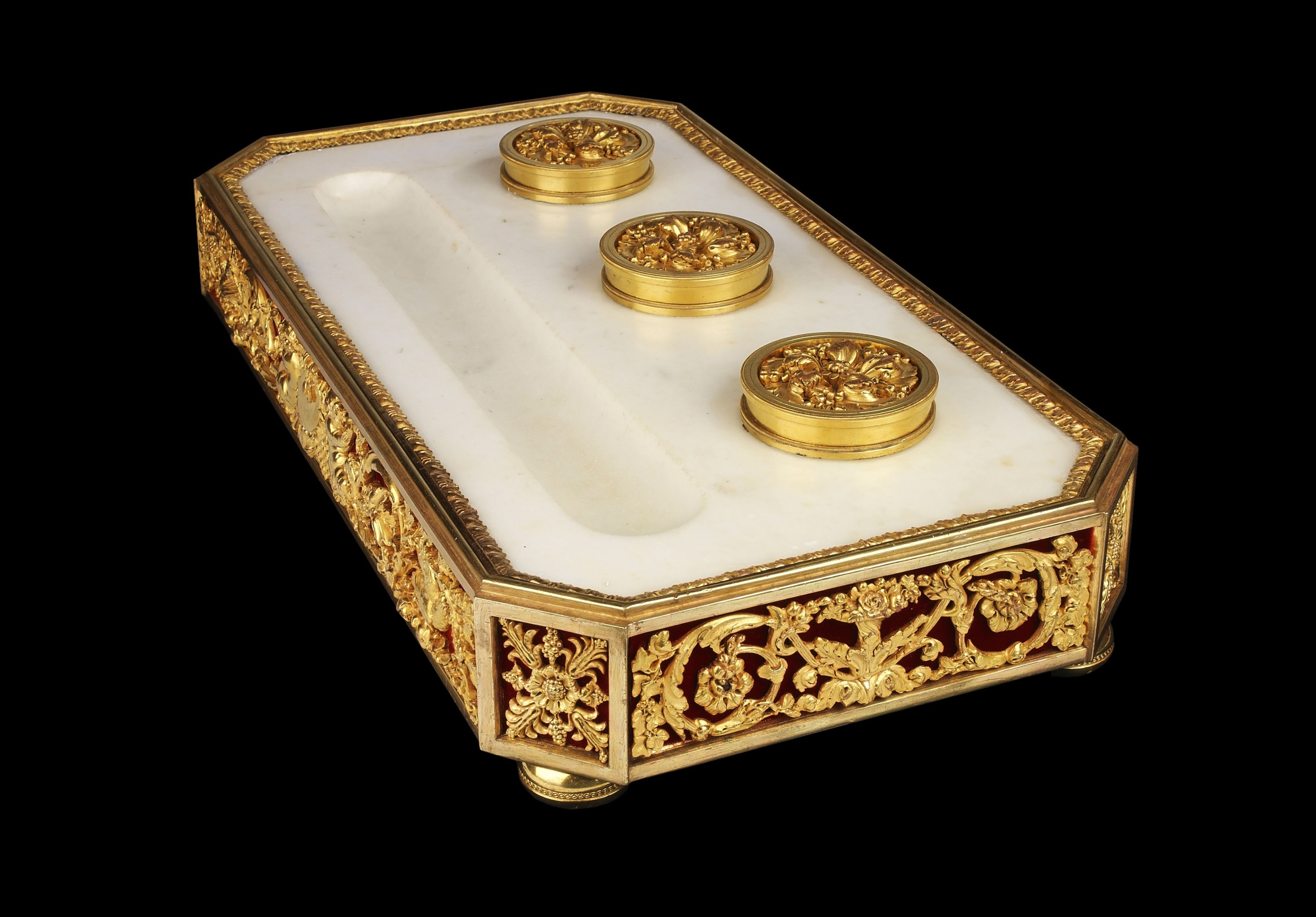

Circa 1800-1810


There is an identical inkstand, but 1 cm smaller both in width and height, at the J. Paul Getty Museum, illustration 187 in the Summary Catalogue of European Decorative Arts. Another identical inkstand was commissioned by Count Nikolai Sheremetev who built Ostankino, outside Moscow, between 1792-93 enlarged 1796 and 1798. He filled it with both Russian and French decorative pieces.By descent to Count P V Shermetev who gave it as a gift in 1912.
Bremer-Davi, Summary, No. 181, p 109, illustrated.
Measurements
| DIMENSIONS | CM | INCHES |
|---|---|---|
| Width: | 48 | 19 |
| Depth: | 25 | 10 |
| Height: | 8.5 | 3 |